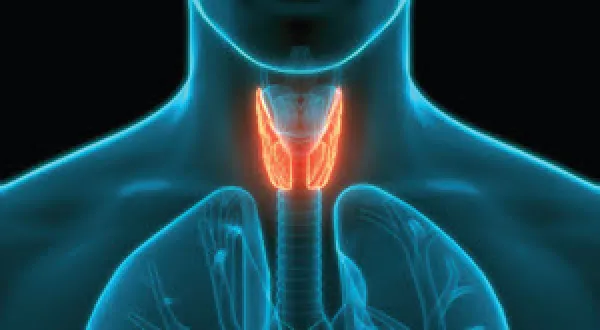Check provider’s wording to ensure understanding and claims success.
When coding thyroid-related procedures, coders are faced with numerous questions before they can accurately select an appropriate code. This becomes even more complex when the surgeon doesn’t carry out a complete thyroid removal. The situation can be further complicated by codes that bundle together, making the task quite challenging.
Read on to review different thyroid procedures and how to code them correctly.

Understand the Specifics of Thyroid Lobectomies
The first step in coding thyroid lobectomies is to figure out what the difference is between the types of procedures. Check out the following primer for a breakdown on the different procedures:
Hemi-thyroidectomy: When the surgeon performs a hemi-thyroidectomy, they remove just one side of the thyroid, typically because that side is affected by a tumor or mass. During this surgery, the surgeon also removes the pyramidal lobe, which joins the two sides of the thyroid.
Surgeons perform this procedure with the intention of leaving half of the thyroid in the patient’s body, allowing the patient to continue to produce thyroid hormones naturally. It’s a lower-risk procedure than a total thyroidectomy because it avoids risk to the other parathyroid glands or the recurrent laryngeal nerve. This surgery, coded with 60220 (Total thyroid lobectomy, unilateral; with or without isthmusectomy), pays about $697.
Completion thyroidectomy: Surgeons perform completion thyroidectomies for patients who previously underwent hemi-thyroidectomies, but later were discovered to have cancer on the side that wasn’t already excised. The physician then removes the remainder of the thyroid to ensure that all cancer cells are excised from the patient’s body. Because patients often have scarring in the area due to the previous surgery, the completion thyroidectomy can be challenging, requiring a tremendous amount of detail.
Even if the thyroid lobe had been excised during a prior surgery, if thyroid tissue is removed during the completion thyroid, that side is getting a completion thyroidectomy, says Barbara J. Cobuzzi, MBA, CPC, COC, CPC-P, CPC-I, CENTC, CPCO, CMCS, of CRN Healthcare in Tinton Falls, New Jersey.
This surgery, coded with 60260 (Thyroidectomy, removal of all remaining thyroid tissue following previous removal of a portion of thyroid), pays about $1,070. Because it reimburses the surgeon nearly $380 more than 60220, some coders will automatically reach for 60260 — even if the surgeon documents a hemi-thyroidectomy, because they aren’t confident about the difference between the procedures. However, it’s important to read the documentation thoroughly to know when the procedure warrants 60260 and when you should instead code 60220.
Why? “If the operative note itself isn’t clear, you may have to review the pre-operative notes to determine whether this is a completion thyroidectomy and use those notes to support the code in an audit request,” explains Terri Brame Joy, MBA, CPC, COC, CGSC, CPC-I, product manager, MRO, in Philadelphia
Identify Important Keywords
The physician may not always use the words “completion” or “hemi” in their documentation of a thyroid lobectomy, which is why it’s essential that you’re able to spot certain keywords in the notes that can lead you to the most accurate code.
If the provider documents “thyroid lobectomy,” they are most likely referring to a hemi-thyroidectomy (60220). If they document scarring from a previous lobectomy, then they are most likely describing a completion thyroid lobectomy (60260).
Know When Modifiers Are Necessary
In some cases, you may need to append a modifier to the lobectomy code to demonstrate specifics about what your surgeon performed. For example, if your surgeon documents a completion thyroidectomy performed on both sides of the thyroid, you’ll append modifier 50 (Bilateral procedure) to 60260. “Unlike 60240 [Thyroidectomy, total or complete], which includes the resection of both thyroid lobes, 60260 alone represents the removal of only one lobe after prior thyroid surgeries, so that is why removal of both lobes would require the 50 modifier with 60260,” Cobuzzi says.
While in other scenarios, the physician may need to perform a completion thyroidectomy within the 90-day global period of the total thyroidectomy to ensure that all malignant cells are removed. In this case, you’ll have to append modifier 58 (Staged or related procedure or service by the same physician or other qualified health care professional during the postoperative period) to 60260. “Be aware that this could potentially trigger a Medically Unlikely Edit (MUE) for reporting that the patient has more than two thyroid lobes removed because of the nature of the codes,” Joy says. “Occasionally, a hemi lobectomy will be reported, but tissue remains that needs to be removed and reported with the completion code. This can be overturned on appeal, if necessary” she expounds.

Review This Thyroid Bundle Scenario
You may notice that 60500 (Parathyroidectomy or exploration of parathyroid(s)) bundles into 60240. But does this bundle still apply if the reasons for exploring and removing the parathyroid were different from those for the thyroidectomy?
Example: The surgeon performed a parathyroid exploration and excision. This procedure was indicated for a clinical indication distinct from the indication related to thyroidectomy. A parathyroid adenoma and hyperparathyroidism were the reason for 60500 and multinodular goiter as the reason for reporting 60240.
Answer: According to the National Correct Coding Initiative (NCCI) examples on the Centers for Medicare & Medicaid Services (CMS) website, CPT® code 60240 is a total or complete thyroidectomy. CPT® code 60500 describes a parathyroidectomy or exploration of parathyroid(s).
The exploration of parathyroid glands with or without parathyroidectomy (code 60500) is standard surgical practice when performing a complete thyroidectomy (code 60240). Therefore, CPT® code 60500 is bundled into CPT® code 60240 and is not separately reimbursable.
Look at This Nodule/Goiter Procedure
Example: A patient diagnosed with hyperthyroidism was found to have an additional single thyroid nodule during an ultrasound. The physician did not specify that it was a goiter. What ICD-10-CM code(s) should be applied?
Answer: A single thyroid nodule, on its own, codes as E04.1 (Nontoxic single thyroid nodule); however, you will want to factor in the diagnosis of hyperthyroidism.
If you take a step back and look at the E05.- code list, you will see that the correct option exists in code E05.10 (Thyrotoxicosis with toxic single thyroid nodule without thyrotoxic crisis or storm).
Beware: If you search for this diagnosis using the term “nodule” as your primary search keyword, you will be directed to E05.20 via the ICD-10-CM index. But, if you use “hyperthyroidism” as the primary search term, you will be directed to E05.10.
For clarity: The term “goiter” refers to “the abnormal enlargement of the thyroid gland,” according to the American Thyroid Association. By this definition, the description of a simple thyroid nodule meets the criteria for a goiter. However, ICD-10-CM coding relies exclusively on the wording of the diagnosis. So even if some words have interchangeable meanings, it’s important not to code a particular symptom or disease if the index does not lead you directly to it.
Take note: A documented thyroid lesion does not necessarily imply the presence of a nodule or goiter. While some coders are inclined to code “thyroid lesion” using E04.1 or E04.9 (Nontoxic goiter, unspecified), these would be incorrect. Instead, you will want to use E07.9 (Disorder of thyroid, unspecified) for thyroid lesions without any additional descriptive information.
